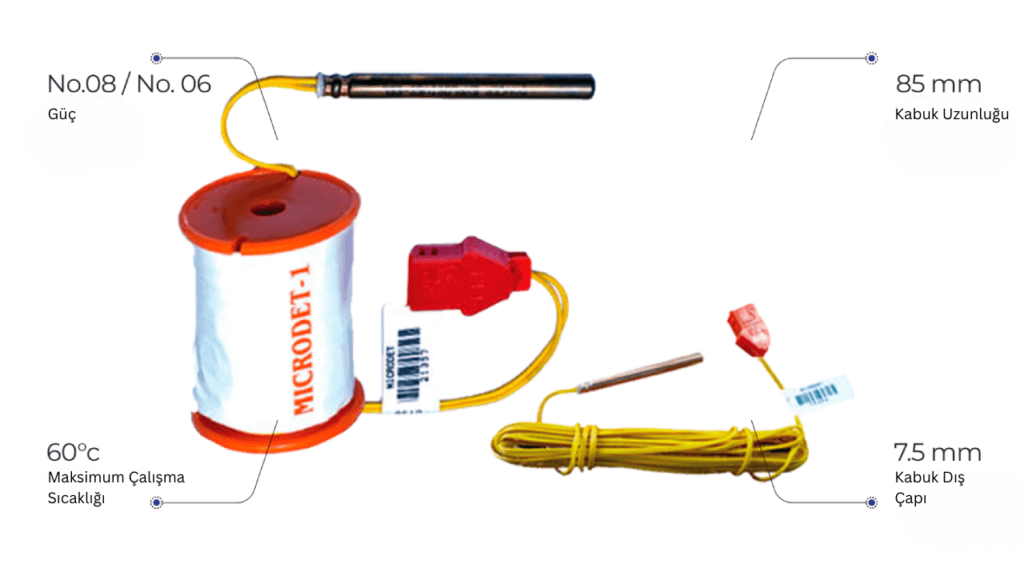Product Description
Programmable Electronic Detonator The Electronic Ignition System offers high accuracy, reliability, and programmability.Product Technical Specifications:
| Parameter | Value |
|---|---|
| Shell Material | Aluminum / Copper |
| Power | No.08 / No.06 |
| Shell Length | 85 mm |
| Shell Outer Diameter | 7.5 mm |
| Delay Range | 0 ms – 8000 ms |
| Maximum Operating Temperature | 60 °C |
| Water Resistance | Excellent |
| Connection Cable Material | Copper Coated Steel / Copper |
| Maximum Connection Cable Length | 60 Meters |
| Main Conductor Wire Material (Resistance) | Copper, Two-Colored (0.07 Ω/m) |
| Maximum Circuit Resistance | 100 Ohms |
| Delay Accuracy | Up to 500 ms: ±1 ms, Over 500 ms: ±0.2% |

